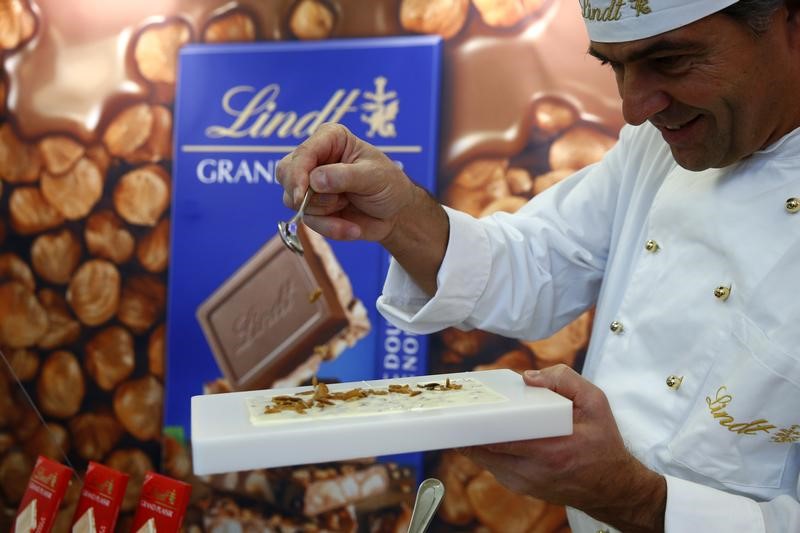Bitcoin price today: dips to $92k as Fed cut doubts spark risk-off mood
Investing.com -- Cocoa prices are likely to fall next year from current elevated levels, but not as sharply as futures suggest, according to Berenberg.
Analysts new pricing model, based on a survey of Ivory Coast farmers, projects a 20% drop in the 2026 crop year, which is a partial unwind of this year’s spike rather than a full correction.
Lower cocoa and sugar costs should feed through to chocolate makers from 2026, helping margins and potentially lifting volumes for downstream brands such as Lindt and Mondelez.
However warmer weather in Europe and price-sensitive consumers are weighing on chocolate consumption in the near term, limiting earnings upside.
Brokerage downgraded Mondelez and Barry Callebaut to Hold, saying both are positioned to benefit from falling input costs but will face sluggish demand or limited room for earnings upgrades.
It kept Lindt as its preferred pick on its greater pricing power and stronger demand resilience at the premium end of the market, but it also noted its rich valuation.
Farmer survey suggested softening supply from Ivory Coast, which produces about 40% of global cocoa. Two-thirds of respondents expect this year’s main crop to be flat or smaller than last year and flagged long-term risks from crop disease, underused fertiliser and soil degradation. These issues could cap how far prices fall and keep cocoa structurally expensive.
While 2026 is likely to bring cost relief, Berenberg said chocolate demand in Europe remains fragile after an unusually warm summer and tighter consumer budgets.
Mid-market brands such as Mondelez face pressure from both premium competitors and cheaper private-label goods, while Barry Callebaut’s benefits from lower cocoa prices are already reflected in forecasts.
